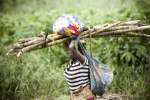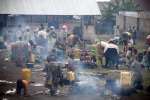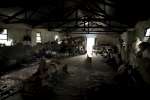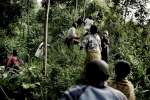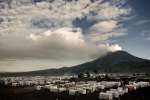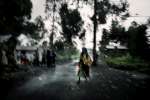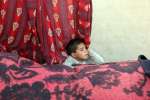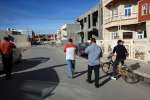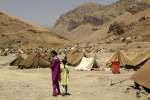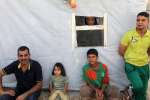- Text size
 |
|  |
|  |
| 
- Français
UNHCR pilots new biometrics system in Malawi refugee camp
Making a Difference, 22 January 2014
DZALEKA, Malawi, January 22 (UNHCR) – The UN refugee agency has completed initial testing of a new biometrics system that should help it better register and protect people, verify their identity and target assistance for the forcibly displaced in operations around the world.
The identification management tool, which is being developed by UNHCR with a private sector company, was tested here at Dzaleka Refugee Camp in Malawi last month. It stores fingerprints, iris data and photographs for facial recognition and will include an emergency feature to aid in fixing populations in advance of full registration. For refugees without ID, this becomes a vital record.
UNHCR experts are currently reviewing the results of the pilot exercise and making recommendations for improvements, with the aim being to produce a biometrics system for the refugee agency that is fast, intuitive, secure, durable and easy to use in varied and challenging environments across the world. It should be ready for rollout to the field in the second half of this year.
"The experience in Malawi will inform our decision on further development and roll-out of the new biometrics tool in our operations around the world," said Steven Corliss, director of UNHCR's division of programme support and management.
"Improving the accuracy of registration data is a priority for UNHCR in our efforts to make a positive impact in the lives of the people we serve. It is also of significant importance to host governments," he added.
When rolled out, the integrated biometric solution will support all standard registration activities, playing a leading part in the implementation of the policy on biometrics in refugee registration and verification, issued by the agency in 2010.
Over the month-long exercise in Dzaleka, the nearly 17,000 refugees reported to UNHCR staff in the camp's registration centre to have their individual data verified and to enrol their biometric data, scanning their fingerprints, face and iris images into the new system.
"It has always been a challenge for the government to establish who is who in the camp; this is one way of solving the situation," said a Malawi government official.
The team gathered by UNHCR in Dzaleka faced significant logistical and technical challenges in maintaining power and online connectivity, as well as the operation and maintenance of state-of-the-art equipment for recording biometric data.
An information campaign explaining the exercise to the refugees was crucial to its success. "The biggest challenge was to convince refugees to enrol, when they were not sure about the overall purpose of the exercise, but once we explained to them, they embraced it and showed up in droves," said Kelvin Sentala, UNHCR assistant field officer in Malawi.
Refugees questioned by UNHCR said they were happy because now there was a permanent record of their identity. Many refugees lose their documents during flight and this can cause them problems later and restrict access to aid and protection. "I can be someone now. I am registered globally with the UN and you'll always know who I am," said 43-year-old Congolese refugee Olivier Mzaliwa, echoing the thoughts of other refugees.
Malawi currently hosts some 17,000 refugees and asylum-seekers, mainly from the Great Lakes region and eastern Africa.
By Tina Ghelli in Dzaleka Refugee Camp, Malawi

